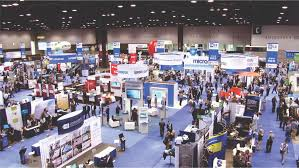
Introduction
The realm of aviation has always captivated human imagination, with its relentless pursuit of progress and innovation. To delve into this fascinating field, an exhibition dedicated to the pivotal milestones in aviation history offers a rich tapestry of technological advancements, heroic figures, and transformative events. This exhibition serves as both an educational journey and a tribute to the pioneers who shaped the skies.
Table of Contents
The Genesis of Flight
Early Dreams and Experiments
The quest for human flight can be traced back to ancient times, with legends of Icarus and Daedalus symbolizing mankind’s age-old fascination with soaring through the air. Figures such as Leonardo da Vinci sketched designs for flying machines, though their realization remained a dream.
The Wright Brothers’ Breakthrough
The Wright brothers, Orville and Wilbur, are often celebrated as the fathers of modern aviation. Their successful flight on December 17, 1903, in Kitty Hawk, North Carolina, marked a watershed moment in history. The Wright Flyer, a biplane with a wingspan of 40 feet, achieved controlled, powered flight, demonstrating that sustained flight was possible. This achievement laid the groundwork for future developments and remains a cornerstone of aviation history.
Technological Advancements
The Golden Age of Aviation
The 1920s and 1930s, often referred to as the Golden Age of Aviation, were marked by rapid technological progress and adventurous spirit. Innovations such as the development of reliable radial engines and aerodynamic improvements enabled aircraft to fly further and faster. This era saw the advent of iconic aircraft like Charles Lindbergh’s Spirit of St. Louis, which completed the first solo nonstop transatlantic flight in 1927.
The Role of World War II
World War II was a catalyst for technological advancements in aviation. The conflict spurred innovations in aircraft design, including the development of faster, more durable fighters and bombers. Jet engines, radar, and pressurized cabins emerged from wartime research and transformed aviation. The post-war period saw these technologies being adapted for commercial and civilian use, leading to the jet age.
Pioneers and Legends
Amelia Earhart: Breaking Barriers
Amelia Earhart remains one of the most celebrated figures in aviation history. As the first woman to fly solo across the Atlantic Ocean in 1932, Earhart broke numerous barriers and inspired countless others. Her achievements not only demonstrated the capabilities of modern aircraft but also challenged societal norms, making her a symbol of courage and determination.

Howard Hughes: The Eccentric Genius
Howard Hughes was another pivotal figure in aviation. An eccentric billionaire, Hughes set multiple records, including the fastest solo flight around the world in 1938. His contributions to aviation extended beyond his record-breaking flights; Hughes also invested in aircraft design and development, influencing the industry’s direction.
The Space Race and Beyond
The Dawn of Space Exploration
The mid-20th century saw the boundaries of aviation extend into space exploration. The launch of Sputnik 1 by the Soviet Union in 1957 marked the beginning of the space race, a period of intense competition between the U.S. and the USSR. This era witnessed milestones such as Yuri Gagarin’s historic orbit around Earth in 1961 and the Apollo 11 mission, which landed the first humans on the Moon in 1969.
Modern Advances and the Future
The 21st century has brought new frontiers in aviation with advancements in unmanned aerial vehicles (UAVs), electric aircraft, and commercial space travel. Innovations such as supersonic jets and sustainable aviation technologies are on the horizon, promising to redefine the future of flight.
The Exhibition Experience
Interactive Displays and Artifacts
The exhibition features a range of interactive displays, allowing visitors to engage with the history of aviation in an immersive way. Models of historic aircraft, original flight suits, and interactive simulators offer a hands-on experience. Artifacts from pioneering flights and technological innovations provide tangible connections to the past.
Educational Programs and Workshops
Educational programs are a key component of the exhibition, aimed at inspiring the next generation of aviators and engineers. Workshops on aerodynamics, aircraft design, and space exploration offer practical insights into the science behind flight. Special lectures and panels featuring historians and aerospace experts provide deeper context and analysis.
A Tribute to the Visionaries
Throughout the exhibition, tributes are paid to the visionaries who pushed the boundaries of what was possible. Displays honor figures such as the Wright brothers, Amelia Earhart, and others who made significant contributions to aviation. Personal stories, photographs, and memorabilia help convey their impact on the field.
Conclusion
The exhibition dedicated to aviation history offers a comprehensive exploration of humanity’s journey through the skies. From the early dreams of flight to the cutting-edge technologies of today, the exhibition captures the essence of a field characterized by innovation, bravery, and relentless pursuit of progress. As visitors walk through the displays and engage with interactive elements, they gain a deeper appreciation for the pioneers who made it all possible and the ongoing advancements that continue to shape the future of aviation.







